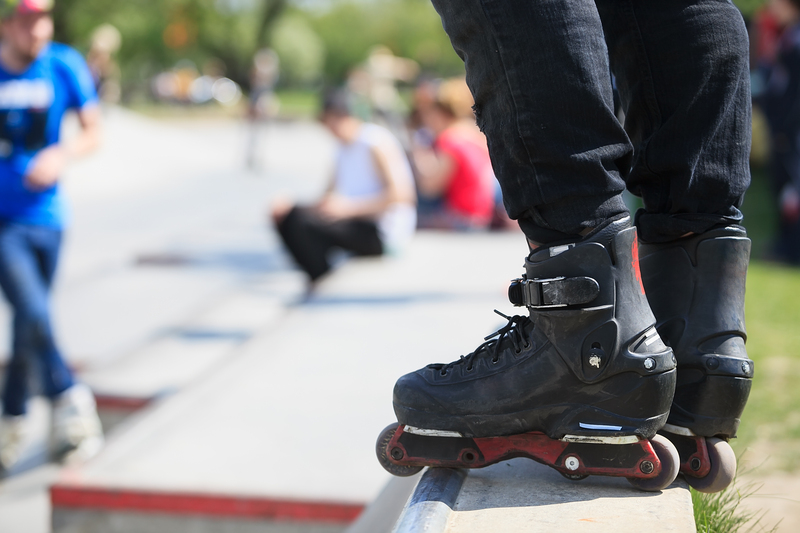Safe Piano Moving Methods and Why DIY Isn't Worth the Risk
Whether it's a family heirloom or a recent investment, your piano is likely one of the most valuable and delicate items in your home. When it's time to move, ensuring the safe transport of your piano should be a top priority. Many homeowners debate whether to hire professional piano movers or attempt a do-it-yourself approach. In this comprehensive guide, we'll cover the best practices for safe piano moving and outline the compelling reasons why DIY piano moving is not worth the risk.

Understanding the Unique Challenges of Piano Moving
A piano isn't just another piece of furniture. These complex instruments feature hundreds of delicate parts, intricate string networks, and heavy yet fragile components. Even upright pianos can weigh between 300-500 pounds, while grand pianos may tip the scales at 1,200 pounds or more.
- Irregular shape and weight distribution: Pianos have an uneven weight distribution, making them awkward to carry and move through tight spaces.
- Sensitive mechanisms: Any sudden impacts or improper handling can cause internal damage, affect tuning, or even render the piano unplayable.
- Risk to property and people: If a piano slips or is dropped, it can cause significant injury or property damage.
Before you even contemplate tackling a piano move yourself, it's important to understand these risks in depth.
Why DIY Piano Moving Is Not Worth the Risk
1. High Risk of Injury
Moving a piano is dangerous work. Even with several strong friends, lifting and maneuvering so much weight can result in back injuries, crushed fingers, or much worse.
- Falls and slips: Navigating stairs, tight doorways, and uneven terrain increases the chances of accidents.
- Untrained helpers: Friends and family likely lack the knowledge and positioning skills of professional movers, compounding the risks to themselves and your piano.
2. Potential for Damage to the Piano
The internal mechanisms of a piano are fragile. Without proper handling:
- Soundboard or string breakage: Improper lifting or impact can severely damage the soundboard or strings, requiring costly repairs.
- Finish scratches and chips: Even with blankets and tarps, DIY moves commonly result in unsightly exterior damage.
- Tuning problems: Sudden movements can throw your piano out of tune, adding additional expenses.
3. Unintended Property Damage
A falling or mishandled piano can destroy floors, dent walls, damage railings, and even break staircases. Hiring professionals who use proven safe piano moving methods is the only way to ensure both your instrument and your home remain intact.
4. Insurance Limitations
Professional piano movers provide insurance specifically designed for music instruments. In contrast, most homeowner's insurance policies won't cover piano damage or injuries that occur during a DIY move.
5. Lack of Proper Moving Equipment
To safely move a piano, specialized equipment is required. These include:
- Piano dollies and skids
- Heavy-duty straps and harnesses
- Ramps and padding materials
Professional Safe Piano Moving Methods Explained
Hiring qualified piano movers means putting your valuable instrument in the hands of trained experts who use industry-proven techniques. Here's how professional piano moving services ensure the safety of both your piano and your property:
1. Site Assessment and Planning
Before moving day, professionals will evaluate your space, measuring doorways, staircases, and hallways. They'll assess the piano's size and weight to determine the best route and methods, minimizing surprises or damage.
2. Disassembly and Padding
Most grand pianos must have legs, pedals, and music stands removed before moving. This step allows for safer transport and reduces the risk of breakage. Movers use:
- Protective padding and wraps: To shield the piano's delicate finish and internal mechanisms.
- Secure packing materials: To keep all removed parts safe and organized.
3. Proper Lifting and Maneuvering Techniques
Trained crews use coordinated lifting strategies and communication, ensuring:
- Weight is evenly distributed among movers.
- The piano remains upright and stable.
- Bumping into walls or tight corners is avoided.
4. Use of Specialized Moving Equipment
Key equipment includes:
- Piano dollies: Heavy-duty, padded dollies specifically designed for moving pianos across flat surfaces without frame stress.
- Stair ramps and boards: To safely navigate inclines or steps.
- Lift gates and hoists: For moving pianos into moving trucks without jarring impacts.
5. Secure Loading and Transportation
Professional movers secure the piano inside the moving truck using straps and padding, preventing shifting during transit. Trucks are climate-controlled if necessary, offering safe piano transport across any distance.
6. Reassembly and Placement
Once at the new location, movers carefully reassemble the piano and place it in the new space. They ensure all parts are reattached properly, minimizing the need for post-move adjustments.
Frequently Asked Questions About Piano Moving Safety
Can two or three strong people safely move an upright piano?
No. Even small upright pianos are extremely heavy and unwieldy. Improper lifting can seriously injure movers or damage the instrument and property. Safe piano moving requires not only strength but specialized skills and equipment.
What special equipment do professional piano movers use?
- Padded piano dollies
- Moving straps and harnesses
- Stair climbers and ramps
- Custom padding and wrapping materials
- Climate-controlled trucks
These tools are vital for safe piano moves and generally unavailable to the average homeowner.
How does improper moving affect a piano's tuning?
Dropping or jostling a piano can throw it severely out of tune. Sudden shocks can damage the strings and soundboard, sometimes requiring expensive repairs beyond simple tuning adjustments.
Will my homeowner's insurance cover piano move damages?
In most cases, damage from improper moving or DIY attempts is not covered by standard policies. Professional piano moving companies carry specialized insurance to fully protect your valuable instrument in transit.
How to Prepare for a Safe Piano Move
If you've decided to work with professional piano movers, here are key steps to help prepare for a seamless, stress-free experience:
- Book early: Schedule your move in advance to secure your preferred date, especially during peak moving seasons.
- Discuss details: Let the movers know about stairs, tight corners, or difficult access points so they can plan accordingly.
- Clear the path: Remove furniture, decor, rugs, and other obstacles from the route the movers will use.
- Communicate special instructions: If your piano is an antique or has sentimental value, share your concerns with the moving team so they can take extra precautions.
If you're moving a grand piano, ask the company about their specific procedures for disassembly, padding, and reassembly. A reputable piano moving company will be happy to explain their safety practices and answer all your questions.
The True Cost of DIY Piano Moving vs. Hiring Professionals
While a DIY piano move might seem like a way to save money, the hidden costs can quickly add up. Consider the following:
- Equipment rental: Heavy-duty dollies, straps, padding, and ramps can be expensive to rent and challenging to use safely without training.
- Potential repairs: Damaged pianos or property can cost hundreds or even thousands to repair.
- Medical bills: Injuries from lifting and moving a piano may result in significant medical costs or lost work time.
- Lack of coverage: Without proper insurance, you bear full responsibility for any accidents occurring during the move.
In contrast, the cost of hiring professionals includes all necessary equipment, expertise, and insurance. You can rest assured that your piano, your home, and your health are protected every step of the way.

Choosing the Right Professional Piano Movers
Not all moving companies are equipped or qualified to handle pianos. To ensure a truly safe piano moving experience, look for companies that:
- Specialize in piano moves: Dedicated piano moving companies possess the knowledge and tools required for challenging and delicate jobs.
- Are fully insured: Verify that the mover carries specialized insurance for musical instrument transportation.
- Have positive reviews: Check references and online testimonials to confirm past success and customer satisfaction.
- Provide a clear estimate: Reputable movers will offer a detailed, written quote outlining all costs and services.
Take the time to research and choose trusted professionals who understand the responsibilities and risks involved in moving your treasured instrument.
Conclusion: The Safety and Peace of Mind You Deserve
Attempting to move a piano yourself is a risky undertaking, with the likelihood of serious injury, property damage, or irreparable harm to your instrument. By entrusting your piano to skilled professionals who follow safe piano moving methods, you gain peace of mind, minimize liability, and protect your investment for years to come.
Remember, the cost of hiring expert piano movers is minimal compared to the potential dangers and expenses of a DIY piano move. Put safety first--choose experience, training, and specialized equipment every time you need to relocate your piano.
Don't take risks with your piano. Contact a reputable piano moving specialist today for a worry-free, safe relocation experience!



